Given the rapid technological advancements, ignoring the hype surrounding search engine optimization (SEO) is difficult. But what is SEO, and why has it become such an essential component of online marketing strategies?
In this comprehensive guide, we’ll dive into the meaning of SEO, the core elements of SEO marketing, and how to use search engine optimization to improve your website’s visibility and attract organic traffic. We’ll also explore the evolving nature of SEO advertising and key trends shaping the industry.
Table of Contents
- Introduction to SEO: Beyond Rankings
- The Key Pillars of SEO
- Types of SEO and Their Use Cases
- How Search Engines Work: Crawling, Indexing, and Ranking
- Why SEO is More Than Keywords
- The Role of User Experience in SEO
- Latest Research and Studies in SEO
- Essential SEO Tools for Success
- Black Hat vs. White Hat SEO: The Ethical Divide
- How to do SEO for Beginners: A Quick Summary of Getting Started
- How to Measure SEO Success: Key Metrics to Track
- SEO for Different Platforms: How to Optimize for YouTube, Amazon, and Pinterest
- SEO Myths Debunked
- SEO Trends to Watch in 2024
- Final Insights
- Common FAQs About SEO
Introduction to SEO: Beyond Rankings
Search engine optimization, commonly known as SEO, refers to the process of improving a website to increase its visibility for relevant searches on search engines like Google, Bing, and Yahoo. But SEO meaning goes beyond just ranking high in search results. It’s about optimizing your entire online presence to ensure a seamless user experience, building brand authority, and ultimately converting visitors into customers.
While SEO was initially about using specific keywords to rank higher, today’s SEO marketing involves a multi-faceted approach that considers technical factors, user intent, and content value. Effective SEO is now a blend of website search engine optimization (technical), on-page content optimization, and external factors such as backlinks and social signals.
The Key Pillars of SEO
To understand what is search engine optimization, we must first break it down into its primary components. Effective SEO strategies typically revolve around three key pillars: technical SEO, on-page SEO, and off-page SEO.
On-Page SEO: Optimizing Content for User Intent
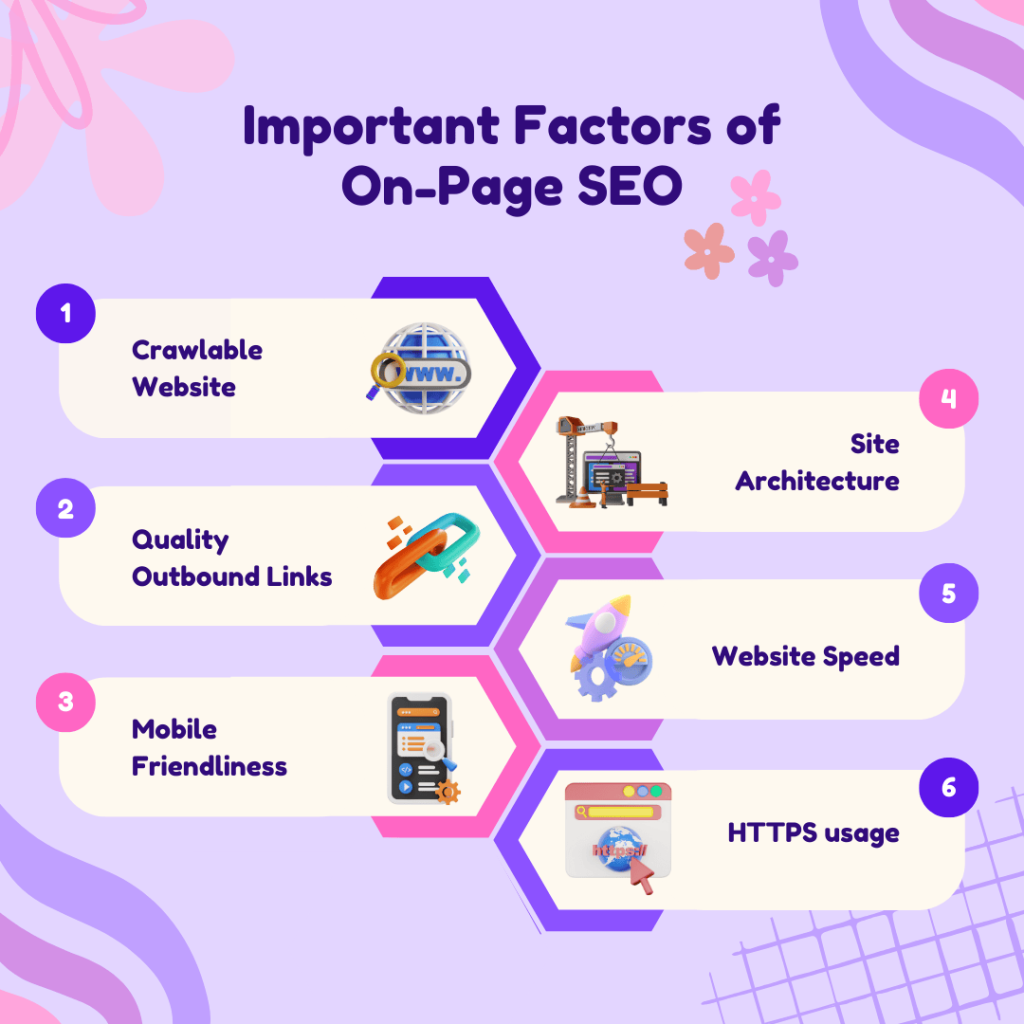
On-page SEO is all about optimizing individual web pages to rank higher and attract relevant traffic. It includes strategies like keyword optimization, meta tags, headers, and internal linking.
- Keyword Research: Understanding what your audience is searching for and incorporating those terms naturally into your content is the backbone of search engine optimization. Using the primary keyword, “what is SEO,” throughout your article helps ensure relevance. Secondary keywords such as “SEO definition” and “meaning of SEO” should also be strategically placed to reach a broader audience.
- Meta Tags and Descriptions: These help search engines understand the content of your page and display relevant results to searchers.
- Headers (H1, H2, H3): Proper header structure makes your content more readable and helps search engines understand the hierarchy of your content.
- Internal Links: Linking to other pages on your website helps distribute link equity and keeps visitors engaged longer, improving SEO.
Off-Page SEO: Building Authority with Backlinks

Off-page SEO involves activities performed outside your website to increase your rankings. These actions, particularly link-building, help search engines see your site as a trustworthy source of information.
- Backlinks: These are external links from other websites to yours. Backlinks act as a vote of confidence, telling search engines that your content is valuable.
- Social Signals: While not a direct ranking factor, engagement on social media platforms can enhance brand visibility and send positive signals to search engines.
- Guest Blogging: Writing content for other reputable sites in exchange for backlinks can boost your site’s authority.
Technical SEO: The Foundation of Search Engine Optimization
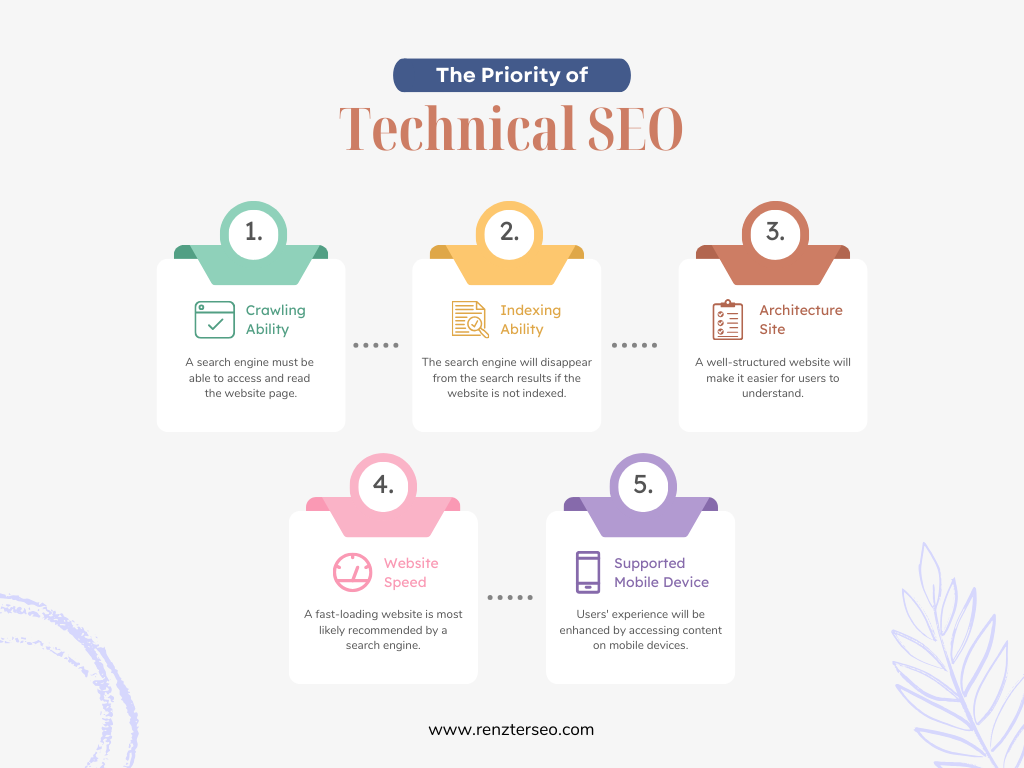
Technical SEO ensures that search engines can crawl and index your website efficiently. It focuses on elements like site speed, mobile-friendliness, and security, all of which impact your site’s visibility in search engines. Without strong technical SEO, your website search engine optimization efforts may fail, even if you have the best content.
Here are the core components of technical SEO:
- Site speed: Google favors websites that load quickly. Tools like Google PageSpeed Insights can help identify areas for improvement.
- Mobile optimization: With Google’s shift to mobile-first indexing, optimizing your site for mobile devices is crucial for SEO marketing.
- SSL certificates (HTTPS): Websites secured with HTTPS are favored by Google and offer a better user experience.
- Crawlability: Ensure that search engines can crawl your site easily by submitting an XML sitemap and eliminating broken links.
Types of SEO and Their Use Cases
SEO isn’t a one-size-fits-all solution. Depending on your business type and target audience, you might need to implement different types of SEO strategies.
Local SEO
Local SEO is perfect for businesses that rely on foot traffic or serve specific geographic areas. It focuses on optimizing your website for local search queries, such as “plumbers near me.” Ensuring your Google My Business profile is up to date, along with gathering reviews, are essential steps in local SEO.
E-commerce SEO
Ecommerce SEO is designed to help online stores rank their product pages. Since product pages are often heavy on visuals and light on text, optimizing alt tags, product descriptions, and using schema markup can help improve rankings. Product reviews and user-generated content also play a significant role in SEO marketing for ecommerce.
International SEO
If you have a global audience, international SEO helps optimize your site for different regions and languages. It involves hreflang tags to indicate language preferences and ensuring your content is accessible to search engines across borders.
How Search Engines Work: Crawling, Indexing, and Ranking

Understanding how search engines work is critical to mastering search engine optimization marketing. Google and other search engines follow three main steps to rank content:
- Crawling: Search engines use crawlers (also known as spiders or bots) to discover content on the web.
- Indexing: Once crawled, web pages are stored in an index, which is a massive database of discovered URLs.
- Ranking: Search engines analyze the indexed pages to rank them based on relevance, authority, and other ranking factors.
Why SEO is More Than Keywords
The days of simply stuffing a page with keywords are long gone. Modern search engine optimization requires a deeper understanding of user intent and content quality. Google’s E-E-A-T (Experience, Expertise, Authoritativeness, and Trustworthiness) framework evaluates content based on how reliable and valuable it is to users.
Experience, Expertise, and Trust
Providing authoritative content is critical for ranking. For instance, if you’re writing about financial advice or health, Google prioritizes content from experts in those fields. By building trust through accurate and insightful information, your site can perform better in search engine rankings.
The Role of User Experience in SEO
Google now prioritizes user experience (UX) as part of its SEO advertising algorithm. If users have a poor experience on your site, whether due to slow loading times, confusing navigation, or mobile incompatibility, your rankings will suffer.
Mobile-First Indexing
Google uses mobile-first indexing, meaning it primarily crawls and indexes the mobile version of your website. Ensuring your site is responsive and loads quickly on mobile devices is essential for both user experience and SEO.
Site Architecture and Navigation
An organized site structure that enables users to find information quickly is crucial. Simplifying navigation helps improve usability, reducing bounce rates and increasing the chances that users will stay longer on your site.
Latest Research and Studies in SEO

SEO continues to evolve, and staying informed on the latest research, trends, and statistics can help businesses better understand where to focus their efforts. In this section, we’ll look at recent studies and key statistics that highlight the importance and impact of SEO, backed by external sources.
1. Organic Traffic Remains the Key Driver
According to a 2023 study by BrightEdge, 53% of all website traffic comes from organic search, making it the largest traffic source. This demonstrates the undeniable power of SEO in driving visibility and engagement, outperforming paid search, which accounts for only 15% of traffic.
For businesses looking to increase their reach and engagement, SEO should be a priority. The BrightEdge study emphasizes that organic search plays a pivotal role in ensuring long-term website growth.
Source: BrightEdge Study on Organic Traffic
2. Zero-Click Searches and Featured Snippets
The rise of zero-click searches is changing the way users interact with search engines. A report by SparkToro found that 65% of Google searches now result in zero clicks, meaning users get their answers directly from the search engine without visiting any websites. These featured snippets—concise responses displayed directly in search results—provide new opportunities for businesses to gain visibility without relying solely on traditional link clicks.
To rank for featured snippets, content should be optimized for user intent by providing direct, clear answers to common questions. Snippet optimization, particularly for FAQ-style queries, is becoming a key focus of modern SEO strategies.
Source: SparkToro on Zero-Click Searches
3. The Importance of Mobile Optimization
Since Google’s shift to mobile-first indexing, having a mobile-optimized website has become crucial for ranking success. As of 2023, 58% of all global website traffic comes from mobile devices, according to Statista. This trend emphasizes the importance of ensuring your website is mobile-friendly and provides an excellent user experience across all devices.
Mobile-first indexing means that Google primarily uses the mobile version of a website for ranking and indexing. As a result, businesses need to prioritize responsive design, fast load times, and mobile-friendly navigation to improve both user satisfaction and search rankings.
Source: Statista Report on Mobile Traffic
4. Page Speed: A Critical Ranking Factor
Page speed has always been important, but since Google’s 2022 update, it’s become a more prominent ranking factor. According to research by Backlinko, 88% of top-ranking websites load in under three seconds. Faster websites not only improve search rankings but also enhance user experience by reducing bounce rates and increasing conversions.
Google’s Core Web Vitals—which include metrics like Largest Contentful Paint (LCP), First Input Delay (FID), and Cumulative Layout Shift (CLS)—have made performance optimization a key element of any successful SEO strategy. Websites that perform well in these areas see better rankings and user engagement.
Source: Backlinko Study on Page Speed
5. AI and Machine Learning in SEO
Artificial intelligence (AI) is transforming SEO in unprecedented ways. Google’s RankBrain and BERT algorithms are examples of how machine learning is used to interpret search queries and deliver more accurate results. RankBrain, for instance, helps Google understand user intent, especially for complex and ambiguous queries. BERT focuses on processing natural language, ensuring that Google can interpret the context of words more accurately, affecting about 10% of all search queries.
AI is enhancing search engines’ ability to understand content contextually, which shifts the focus away from keyword-stuffing to more meaningful, user-focused content. As AI continues to evolve, its role in SEO will only grow.
6. Core Web Vitals and User Experience
Google’s Core Web Vitals—introduced in 2021 as part of its Page Experience Update—are metrics that evaluate how users experience a website. These metrics are now an essential part of Google’s ranking system. Core Web Vitals include:
- Largest Contentful Paint (LCP): Measures how long it takes for the largest element on a page to load (optimal is under 2.5 seconds).
- First Input Delay (FID): Tracks how long it takes for a page to respond to the user’s first interaction.
- Cumulative Layout Shift (CLS): Measures visual stability by looking at how much elements shift during page loading.
Improving these metrics can lead to higher rankings and better user engagement, with research showing that websites excelling in these areas see significantly reduced bounce rates and higher conversion rates.
Source: Google Web Vitals
7. Video SEO: A Growing Opportunity
Video content is becoming increasingly important in SEO. Studies show that video content is 50 times more likely to rank in search results than text-based content. Platforms like YouTube, TikTok, and even embedded website videos offer significant opportunities to improve SEO.
According to Wyzowl’s 2022 Video Marketing Statistics, 86% of businesses now use video as a marketing tool, and 93% of marketers report that video plays a crucial role in their strategy. Video SEO strategies include optimizing video titles, descriptions, closed captions, and transcripts.
Source: Wyzowl Video Marketing Statistics
8. Voice Search and the Shift in SEO
Voice search is rapidly changing how users find information online. Juniper Research estimates that 50% of all internet searches will be voice-based by 2024. With the rise of smart speakers like Amazon Alexa, Google Assistant, and Siri, SEO must adapt to more conversational search queries.
Optimizing for voice search means focusing on natural language processing (NLP), answering specific questions, and targeting long-tail keywords. As more users adopt voice search, businesses should align their content to these new user behaviors.
Source: Juniper Research on Voice Search
Summary of Key SEO Insights for 2024
- 53% of website traffic comes from organic search (BrightEdge).
- 65% of searches result in zero clicks due to featured snippets (SparkToro).
- 58% of global website traffic is from mobile devices (Statista).
- 88% of top-ranking websites load in under three seconds (Backlinko).
- 50% of searches will be voice-based by 2024 (Juniper Research).
These insights demonstrate that SEO is more dynamic than ever, with shifts toward mobile optimization, AI-driven algorithms, and voice search. By staying informed of these trends, businesses can adapt their SEO strategies to achieve better rankings and long-term success.
Essential SEO Tools for Success
No SEO strategy is complete without using the right tools. To effectively implement and monitor your search engine optimization marketing strategies, utilizing the right tools is important. These SEO tools help streamline the process of optimizing your website, conducting keyword research, analyzing backlinks, tracking rankings, and monitoring your site’s overall health. Below are some of the most widely used and effective tools for success in SEO:

1. Keyword Research Tools
- Google Keyword Planner: Free tool offering keyword ideas, search volume, and competition levels.
- SEMrush: Comprehensive tool for keyword research, competitor analysis, and domain insights.
- Ahrefs Keyword Explorer: Known for accurate keyword difficulty analysis and competitor insights.
2. On-Page SEO Tools
- Yoast SEO (WordPress): An easy-to-use plugin for optimizing meta tags, content readability, and keyword usage.
- Screaming Frog: A site crawler that helps detect technical issues like broken links and missing metadata.
- Google Search Console: Free tool for monitoring your site’s performance in Google search, helping with crawl and indexing issues.
3. Technical SEO Tools
- Google PageSpeed Insights: Analyzes site speed and provides suggestions for improvement, vital for ranking.
- GTmetrix: Offers detailed performance reports to improve load times and enhance user experience.
- Ahrefs Site Audit: Identifies technical SEO issues that may hinder your site’s ranking potential.
4. Link-Building and Backlink Analysis Tools
- Ahrefs Backlink Checker: Tracks your backlink profile and helps identify high-quality link opportunities.
- Moz Link Explorer: Helps assess your site’s domain authority and backlink profile for better off-page SEO.
5. Rank Tracking Tools
- SEMrush Position Tracking: Tracks your keyword rankings across different locations and devices.
- Ahrefs Rank Tracker: Provides insights into your keyword performance over time and compares them with competitors.
6. Analytics Tools
- Google Analytics: Monitors site traffic, user behavior, and conversion rates, giving crucial insights for refining your strategy.
- Hotjar: Provides heatmaps and visitor recordings to help you understand how users interact with your site.
7. All-in-One SEO Suites
- SEMrush: A powerful, all-inclusive tool for keyword research, rank tracking, and backlink auditing.
- Ahrefs: Another comprehensive tool offering advanced features for site audits, keyword research, and backlink tracking.
Black Hat vs. White Hat SEO: The Ethical Divide
SEO techniques can be divided into black hat and white hat approaches. Knowing the difference is crucial to avoiding penalties and ensuring long-term success.
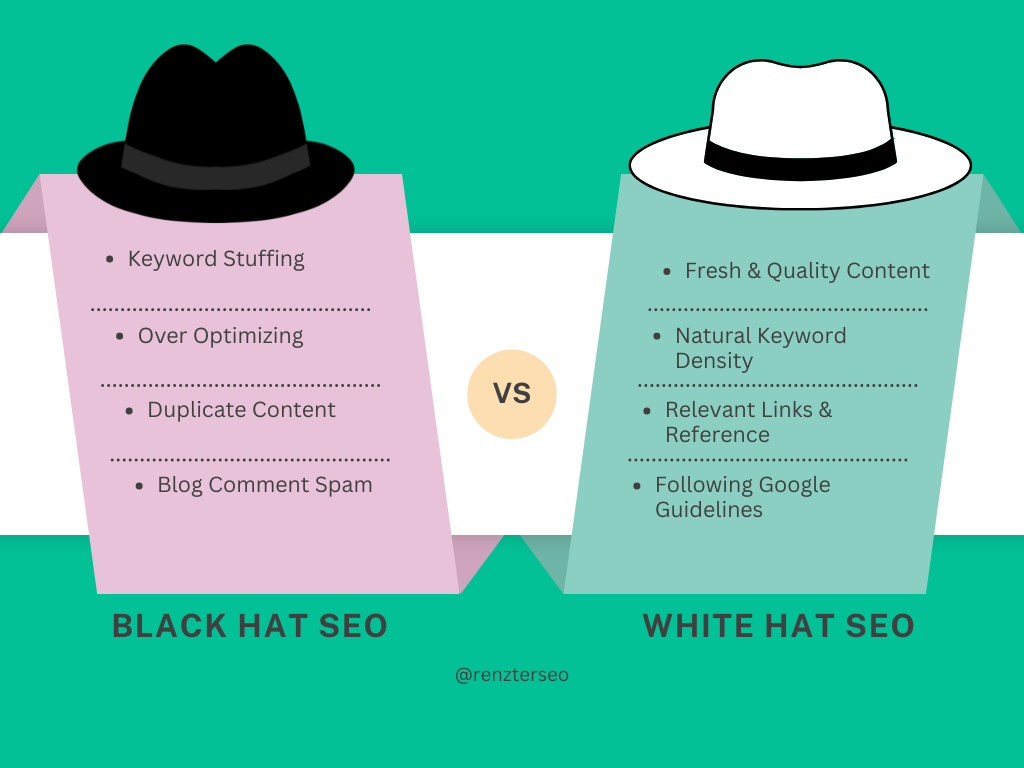
Black Hat SEO
Black hat SEO refers to unethical tactics that seek to manipulate search engine rankings. Examples include:
- Keyword stuffing
- Cloaking (showing different content to users and search engines)
- Paid link schemes
These techniques might offer quick results but often lead to severe penalties, such as being de-indexed from Google altogether.
White Hat SEO
White hat SEO practices are ethical and follow search engine guidelines. These strategies focus on user experience and quality content, such as:
- Natural keyword integration
- High-quality backlinks
- Optimizing for mobile and site speed
Understanding the distinction between black and white hat SEO can help you make more informed choices when optimizing your website.
How to do SEO for Beginners: A Quick Summary of Getting Started
If you’re new to SEO, it can seem overwhelming with its technical jargon and myriad strategies. However, you can get started with a simplified, step-by-step approach that builds a strong foundation for your website’s visibility on search engines. Here’s a quick guide to help beginners get their SEO journey off the ground:
Step 1: Keyword Research
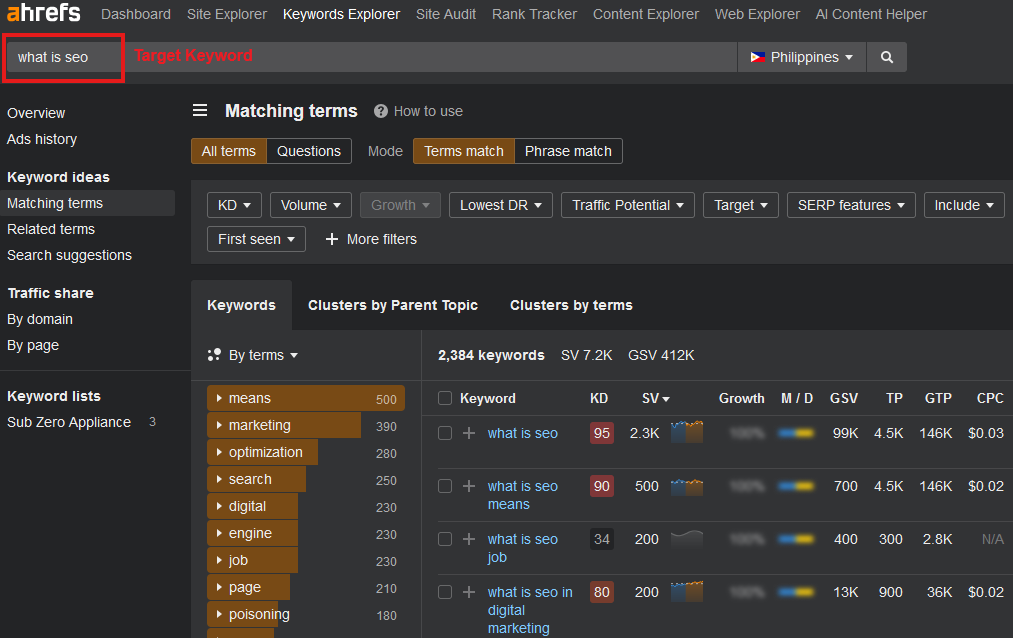
The first step in SEO for beginners is identifying the right keywords. Use tools like Google Keyword Planner, SEMrush, or Ubersuggest to find relevant keywords for your niche. Focus on both primary and long-tail keywords to capture a broader audience.
- Primary keyword: The main topic you want to rank for, like “what is SEO.”
- Long-tail keywords: Phrases that are more specific, such as “how to do SEO for a small business.”
Step 2: Optimize On-Page SEO
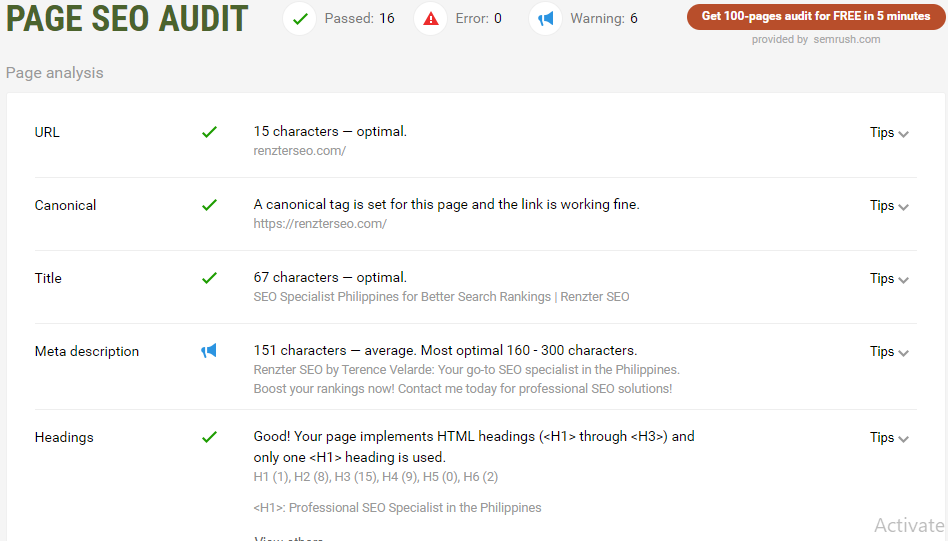
Once you have your target keywords, optimize your content using the following on-page SEO techniques:
- Title tag: Include your primary keyword in the page title (keep it under 60 characters).
- Meta description: Write a concise summary that includes your keyword and entices users to click.
- Headings: Use H1, H2, and H3 tags to structure your content. Place your primary and secondary keywords naturally within these headings.
- Content: Create valuable, informative content that answers the user’s query. Incorporate your keywords naturally without overstuffing.
Step 3: Focus on Technical SEO
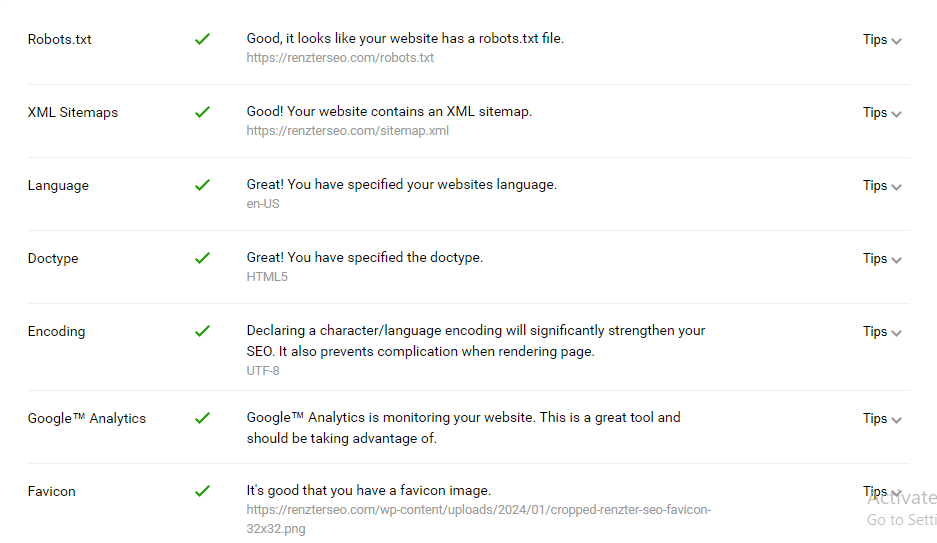
After you’ve optimized your content, it’s essential to make sure your site is accessible to search engines:
- Ensure your site is mobile-friendly: Google prioritizes mobile-first indexing.
- Improve page speed: Use tools like Google PageSpeed Insights to ensure your site loads quickly.
- Create an XML sitemap: Submit this to Google Search Console to help search engines crawl your site effectively.
- Fix broken links: Clean up any broken or outdated links that can negatively impact user experience and SEO.
Step 4: Build Backlinks
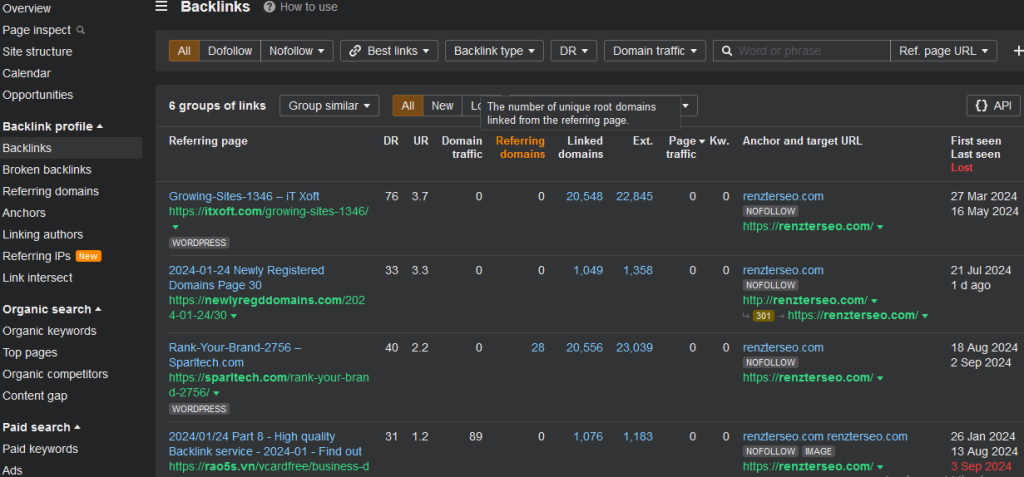
Link-building is crucial for building site authority. Reach out to other websites for guest posting opportunities or share your content on social media. Quality backlinks from authoritative sites help boost your search engine ranking.
Step 5: Monitor Your SEO Performance
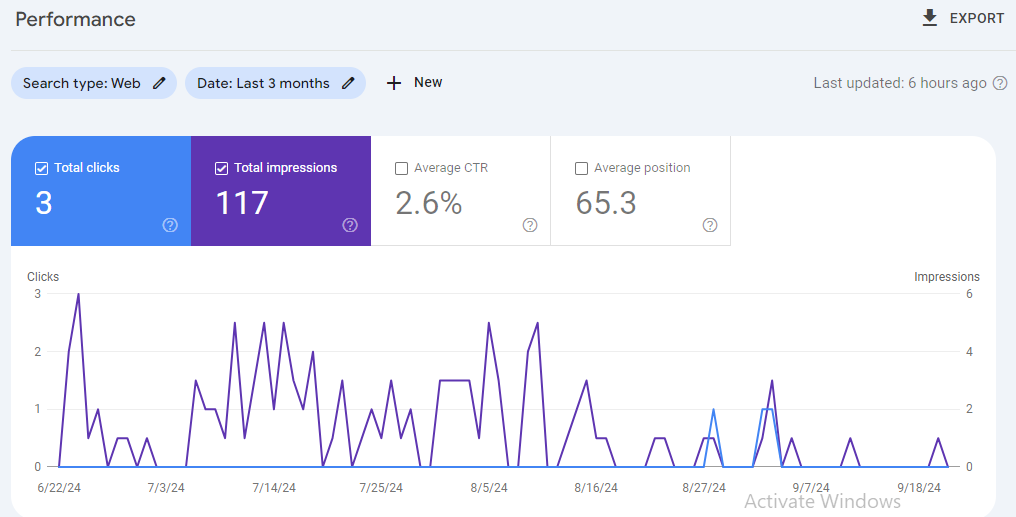
Finally, use tools like Google Analytics and Google Search Console to track your SEO progress. Monitor metrics such as organic traffic, bounce rate, and keyword rankings to gauge the effectiveness of your strategy.
Beginner’s SEO Checklist:
- Keyword research using tools.
- On-page optimization with keywords in titles, headers, and meta descriptions.
- Create high-quality, relevant content.
- Technical SEO improvements: page speed, mobile optimization, sitemaps.
- Backlink building from authoritative sources.
- Monitor performance through analytics tools.
How to Measure SEO Success: Key Metrics to Track

It’s not enough to implement SEO techniques—you need to measure SEO success. Monitoring specific metrics can provide insight into how well your efforts are paying off.
Organic Traffic
One of the most telling signs of successful search engine optimization is an increase in organic traffic. Use tools like Google Analytics to track the number of users coming to your site through unpaid search results.
Keyword Rankings
Tracking the movement of your target keywords (such as “what is SEO” or “SEO definition”) is essential to understanding how well your content ranks in search engine results.
Bounce Rate
A high bounce rate indicates that users are leaving your website shortly after arriving. This could point to issues with content relevance or page experience.
Backlinks
Keeping an eye on your site’s backlink profile helps ensure that you’re earning links from high-authority websites, which is essential for improving your site’s domain authority.
Conversion Rate
The ultimate goal of SEO marketing is not just to bring traffic to your site but also to convert visitors into customers. Whether it’s signing up for a newsletter or making a purchase, tracking conversions is key to understanding your SEO’s effectiveness.
SEO for Different Platforms: How to Optimize for YouTube, Amazon, and Pinterest
SEO is not confined to traditional web searches. Different platforms like YouTube, Amazon, and Pinterest have their own algorithms and SEO best practices.
YouTube SEO
To optimize content on YouTube, focus on:
- Video title optimization
- Adding relevant tags and descriptions
- Thumbnail optimization
- Video engagement (likes, shares, comments)
Amazon SEO
Amazon’s algorithm primarily ranks products based on relevance and sales performance. Focus on:
- Keyword-optimized product titles and descriptions
- Encouraging positive reviews
- Offering competitive pricing
Pinterest SEO
Pinterest works more like a visual search engine. To optimize your pins:
- Use high-quality images
- Write detailed descriptions with relevant keywords
- Pin consistently to stay relevant
SEO Myths Debunked
There are plenty of misconceptions around SEO. Let’s address a few common SEO myths:
Myth 1: SEO is Dead
Some argue that SEO is no longer relevant due to algorithm updates. However, SEO is evolving, not dying. As long as search engines exist, SEO will remain vital for increasing visibility.
Myth 2: You Can “Set It and Forget It”
SEO is not a one-time effort. The algorithms change, competitors adapt, and user behavior shifts, meaning that SEO strategies must be revisited and updated regularly.
Myth 3: Social Signals Directly Impact SEO
Although social media doesn’t directly affect rankings, an active social presence can indirectly help by increasing traffic and brand authority.
Myth 4: Link Quantity is More Important than Quality
It’s better to have a few high-quality backlinks from reputable sources than a large number of links from low-quality websites. Google values authority and relevance more than quantity.
Myth 5: Meta Tags No Longer Matter
While meta keywords are no longer used by search engines, meta descriptions still play an essential role in driving click-through rates from search results pages.
SEO Trends to Watch in 2024

As search engines evolve, so too must your SEO strategies. Here are some of the most important search engine optimization marketing trends to keep an eye on in 2024.
1. Artificial Intelligence and SEO
AI-powered algorithms are becoming a driving force behind search engine rankings. Tools like GPT-4 help generate relevant, human-readable content that adheres to SEO advertising best practices.
2. Voice Search Optimization
With the rise of voice-activated devices like Google Home and Alexa, optimizing for voice search is increasingly critical. Voice search queries are more conversational, so incorporating natural language in your content is key to ranking for these queries.
3. Increased Focus on Core Web Vitals
Google’s emphasis on Core Web Vitals—metrics like page loading speed, interactivity, and visual stability—will only grow in importance. Ensuring your website performs well in these areas will be a significant ranking factor.
4. Structured Data and Schema Markup
Structured data allows search engines to understand your content better. By using schema markup, you increase your chances of appearing in rich snippets, which can improve your visibility.
Final Insights
The meaning of SEO has expanded beyond just improving search engine rankings. Today, it’s about delivering the best possible experience for your users. With advances in AI, mobile optimization, and new technologies, SEO will continue to evolve. Staying updated with these changes will ensure that your search engine optimization strategy remains effective in the long term.
Understanding what is SEO and implementing its various facets—technical SEO, on-page optimization, and off-page strategies—will enable your website to reach new heights and deliver the best value to users. Keep your content fresh, focus on the user, and always be ready to adapt to the ever-changing SEO landscape.
Common FAQs About SEO
Let’s address five frequently asked questions about search engine optimization marketing to clarify some key aspects:
What is SEO and Why Is It Important?
SEO stands for Search Engine Optimization. It is important because it improves a website’s visibility in search engines, helping to drive organic traffic, improve brand credibility, and generate leads or sales without relying on paid advertising.
How Long Does It Take to See Results From SEO?
SEO is a long-term strategy. While some improvements can be seen within a few weeks, most efforts take 3 to 6 months before you see significant progress. It depends on competition, the current state of your website, and how aggressive your SEO advertising tactics are.
Can I Do SEO on My Own, or Do I Need an Expert?
While basic SEO can be done on your own (especially with free resources and tools), advanced SEO often requires professional expertise. Hiring an SEO specialist can lead to more targeted strategies and faster results.
What Is the Difference Between SEO and SEM?
SEO refers to organic strategies for improving visibility on search engines, while SEM (Search Engine Marketing) includes paid strategies like Google Ads. Both approaches can work together for an effective digital marketing strategy.
Is SEO Only About Google?
While Google dominates the search engine market, SEO principles apply to other search engines like Bing and Yahoo. Additionally, platforms like YouTube and Amazon also rely on search algorithms, meaning SEO can benefit multiple platforms.
Thank you for reading my blog about “What is SEO”! I hope you gained valuable insights and a deeper understanding of SEO. If you’re looking to continue learning, feel free to explore my other blogs, where I cover more advanced SEO topics. Additionally, if you need help with optimizing your website, Renzter SEO offers a full range of services including on-page SEO, off-page SEO, technical SEO, and local SEO. Let’s work together to boost your search engine rankings and grow your online presence! Contact us today to get started.

